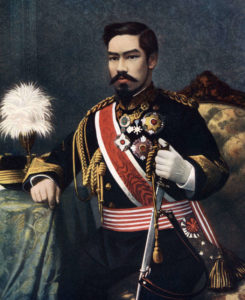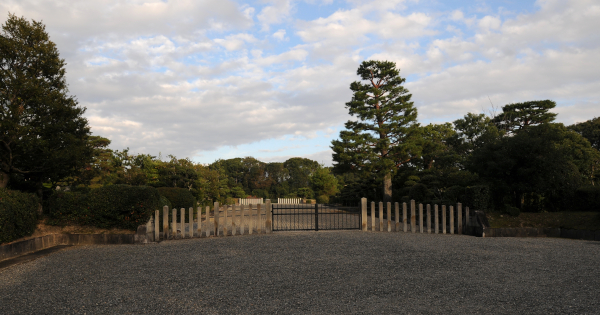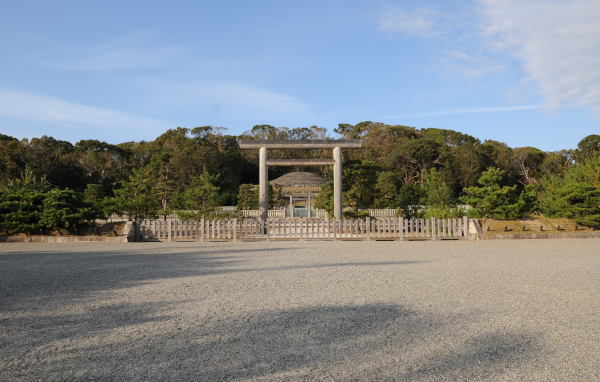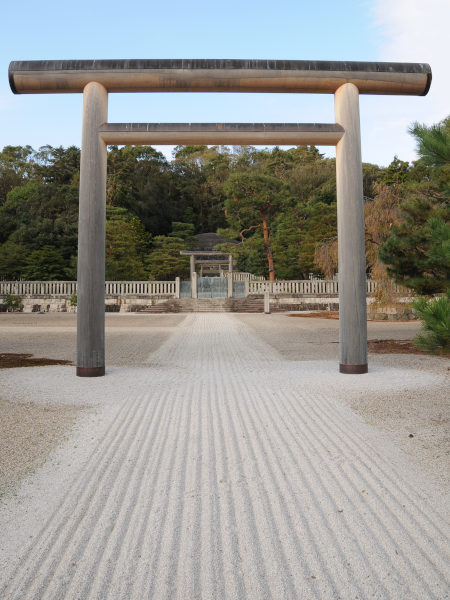 Japan’s Meiji Emperor reigned over the country in one of its most turbulent eras. When he was born, in 1852, the Shoguns of the Tokugawa dynasty had ruled a secluded country for around 250 years. When he ascended to the throne, in 1868, Shogun Tokugawa Yoshinobu had abdicated, both under pressure from Japanese uprisings as well as threats of foreign power. And when Emperor Meiji died in 1912, he had ushered in an era of rapid technological modernisation, cultural renewal, state reform, and governmental participation – penning the first constitution of Japan and in Asia as a whole.
Japan’s Meiji Emperor reigned over the country in one of its most turbulent eras. When he was born, in 1852, the Shoguns of the Tokugawa dynasty had ruled a secluded country for around 250 years. When he ascended to the throne, in 1868, Shogun Tokugawa Yoshinobu had abdicated, both under pressure from Japanese uprisings as well as threats of foreign power. And when Emperor Meiji died in 1912, he had ushered in an era of rapid technological modernisation, cultural renewal, state reform, and governmental participation – penning the first constitution of Japan and in Asia as a whole.
A great man like this is often revered beyond his death, and emperors in Japan usually get a special honour upon their demise: They become one of Japan’s many kami. The Meiji Shrine is located in Tokyo at a place he liked to visit during his lifetime, and it is a very popular spot for hatsumode in the few days after New Year’s Day. However, his tomb is where he was born, in Kyoto, and it is quite spectacular, even when taking into account that the Meiji emperor was still seen as a true descendant of the gods.
The tomb of the Meiji Emperor is located in the southern part of Kyoto, but very easy to find. From Fushimi Momoyama (Keihan) or Momoyama (Kintetsu Nara Line) simply follow the road uphill until it takes a sharp turn to the right. Straight ahead, a broad gravel road starts, leading further uphill. It is lined with beautiful, large cedar trees that are impressive even now, although the forest has suffered quite a bit during typhoon Jebi in September 2018. After a while of gentle ascent on the softly curving road, the top is reached, opening up to the view below.
 To the right, there are a few modern buildings that are not very interesting, but moving further along, a large square opens up, and to the left is finally the tomb of the Meiji Emperor.
To the right, there are a few modern buildings that are not very interesting, but moving further along, a large square opens up, and to the left is finally the tomb of the Meiji Emperor.
 Its dimensions are hard to gauge from this picture, but the first torii is about five to six metres high. The dome-shaped tumulus, probably 25 metres at the back, holds at its base the emperor’s remains. In fact, this type of tomb is very old and can be found in Korea as well. Turning around, there is a steep staircase leading up to the plateau, and from this height, there is a nice view over the southern part of Kyoto, even though it is a bit obscured by more trees.
Its dimensions are hard to gauge from this picture, but the first torii is about five to six metres high. The dome-shaped tumulus, probably 25 metres at the back, holds at its base the emperor’s remains. In fact, this type of tomb is very old and can be found in Korea as well. Turning around, there is a steep staircase leading up to the plateau, and from this height, there is a nice view over the southern part of Kyoto, even though it is a bit obscured by more trees.
 A small but quite steep road leads further on, where a smaller version of Meiji’s tomb can be found. There, his wife, Empress Shoken is buried. There is no view at all from her tomb, since it lies lower on the hill and the spot is completely surrounded by trees.
A small but quite steep road leads further on, where a smaller version of Meiji’s tomb can be found. There, his wife, Empress Shoken is buried. There is no view at all from her tomb, since it lies lower on the hill and the spot is completely surrounded by trees.
 The whole complex is enormous, and apparently it was very expensive to build. So much so, in fact, that Meiji’s successor, the Taisho emperor, had to promise to build himself a much more humble abode for his afterlife. Since he lived only until 1925, and was much less popular among the Japanese people, this request was perfectly justified in the end.
The whole complex is enormous, and apparently it was very expensive to build. So much so, in fact, that Meiji’s successor, the Taisho emperor, had to promise to build himself a much more humble abode for his afterlife. Since he lived only until 1925, and was much less popular among the Japanese people, this request was perfectly justified in the end.
